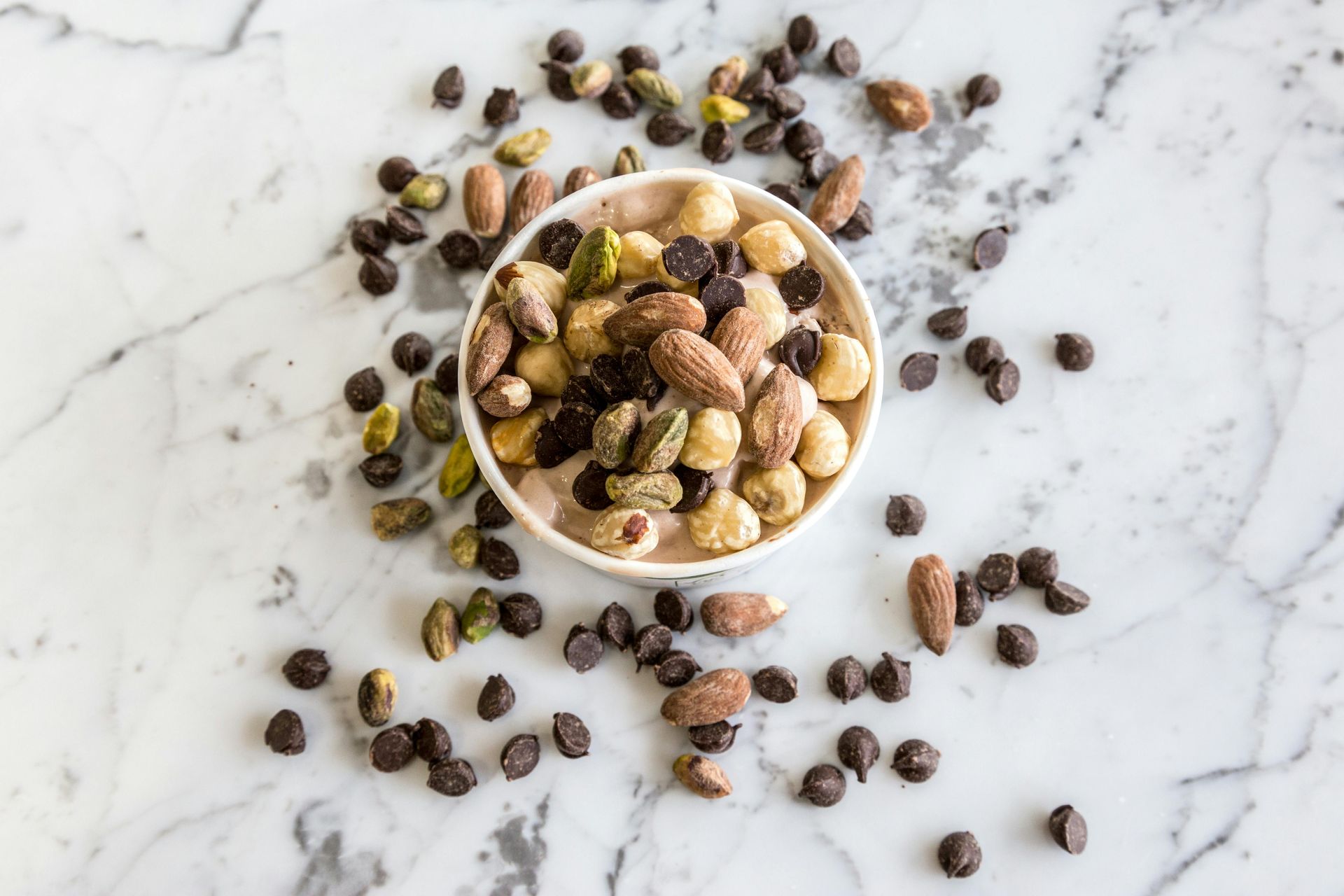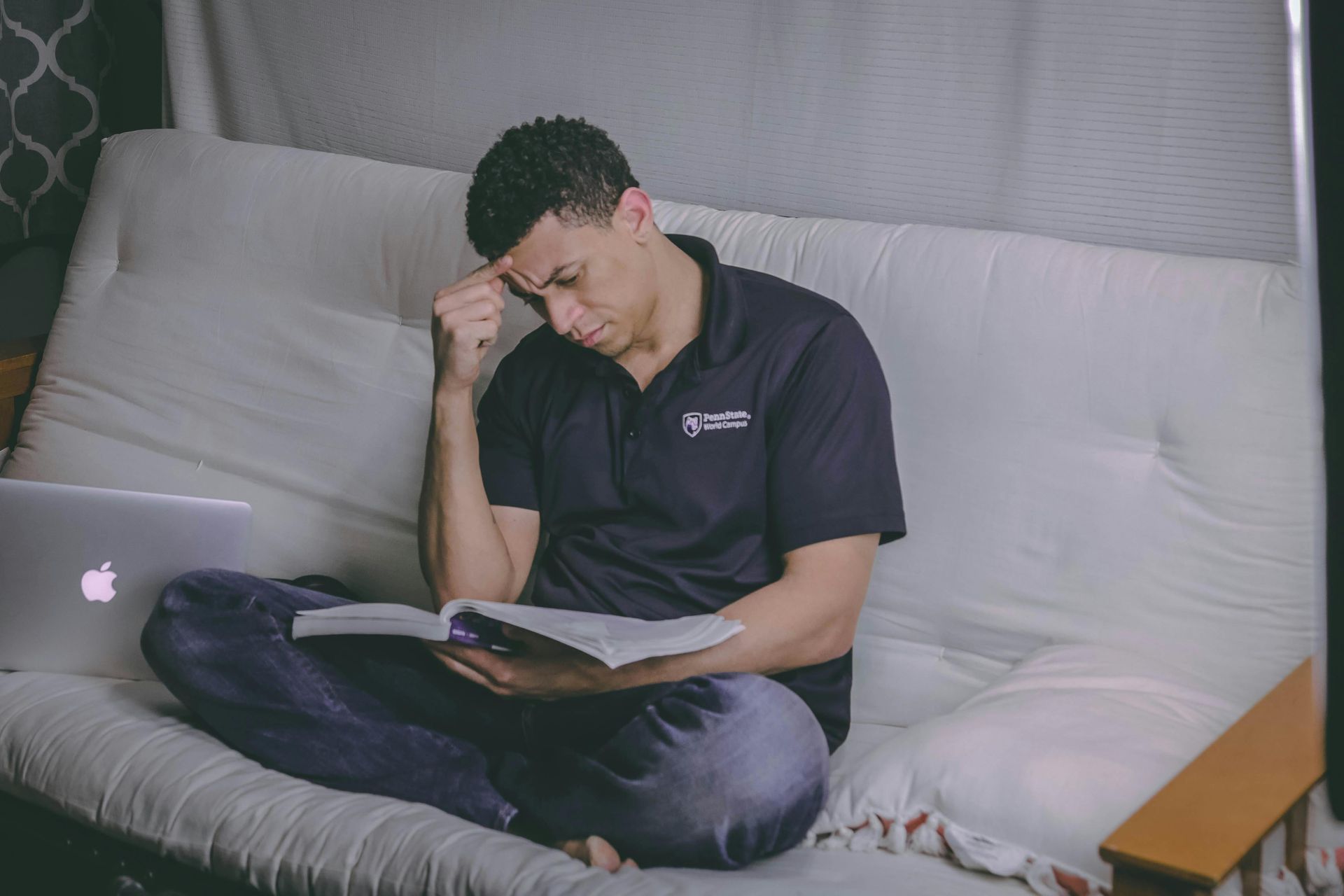A Fiber Guide for Beginners
A "Superfood" for Your Health and Fitness Goals

You've probably heard about fiber and how it's good for you, but maybe you're not entirely sure what it is or why it's so important. This beginner's guide will break down the basics of fiber, highlighting its incredible benefits and how it can support your overall health and fitness journey.
What Exactly is Fiber?
If any food can be called a “superfood”, it’s fiber. Dietary fiber refers to the non-digestible carbohydrates found in plant-based foods. Unlike other carbohydrates that your body breaks down into sugar, fiber passes relatively intact through your digestive system. It essentially adds bulk to your diet and plays a vital role in numerous bodily functions.
There are two main types of fiber:
- Soluble Fiber: This type dissolves in water to form a gel-like substance. It's found in foods like oats, barley, nuts, seeds, beans, lentils, peas, and some fruits and vegetables. Soluble fiber helps slow down digestion and nutrient absorption.
- Insoluble Fiber: This type doesn't dissolve in water and adds bulk to your stool. It's found in foods like wheat bran, vegetables, and whole grains. Insoluble fiber helps speed up the passage of food through your digestive system.
The Amazing Benefits of Fiber for Health and Fitness
Scientific research consistently demonstrates the remarkable benefits of adequate fiber intake for both general health and specific fitness goals:
- Digestive Health: Fiber, especially insoluble fiber, adds bulk to stool and helps it move more easily through your digestive tract, preventing constipation and promoting regularity. For instance, a meta-analysis by Schoot and colleagues (2022) found that fiber supplementation effectively improves constipation. Soluble fiber can also contribute to a healthy gut microbiome by providing food for beneficial bacteria as noted in Guan and colleagues (2021).
- Blood Sugar Regulation: Soluble fiber slows down the absorption of sugar into the bloodstream, which can help stabilize blood sugar levels and improve insulin sensitivity (see Dong and colleagues, 2018). A systematic literature review by Abdi and colleagues (2025) also found improvements in blood sugar and glycemic control, as did Giuntini and colleagues (2022). This is particularly important for preventing type 2 diabetes and managing energy levels throughout the day. Another systematic review and meta-analysis (Lu and colleagues, 2023) focused on viscous soluble fiber in type 2 diabetes patients also found benefits.
- Heart Health: Studies (such as Ghavami and colleagues, 2023; and Brown and colleagues, 1999) have shown that adequate fiber intake, particularly soluble fiber, can help lower LDL ("bad") cholesterol levels. This is achieved by fiber binding to cholesterol in the digestive system, preventing its absorption. Specific types of soluble fiber, such as oat bran, have demonstrated cholesterol-lowering effects. The Ghavami and colleagues (20023) meta-analysis, in particular, showed that isolated soluble fiber supplementation significantly reduced LDL cholesterol levels, as well as total cholesterol and triglycerides. Reducing LDL cholesterol is a key factor in preventing cardiovascular diseases.
- Weight Management: High-fiber foods tend to be more filling than low-fiber foods. The bulk provided by fiber can help you feel satisfied for longer, potentially reducing overall calorie intake (see Jovanovski and colleagues, 2020, as an example). Thus, a high-fiber diet can be a valuable tool for those aiming to manage their weight or lose weight.
- Reduced Risk of Certain Diseases: Research suggests that a high-fiber diet may be associated with a lower risk of certain types of cancer, including colorectal cancer. The exact mechanisms are still being studied but may involve fiber's role in promoting gut health and reducing inflammation. Alahmari (2024) notes the literature suggests that higher fiber intake can decrease the risks of “cardiovascular disease (CVD), type II diabetes, obesity, colon cancer, and inflammation.” She also notes that while research is limited and drawing definitive conclusions may be challenging, having a decent amount of fiber in one’s diet is still highly recommended. A review by Arayici and colleagues (2023), higher fiber consumption was linked with a 22% decreased cancer risk and a 17% decreased chance of dying from cancer.
- Overall Well-being: By contributing to a healthy gut microbiome, fiber can indirectly impact various aspects of health, including immune function and even mental well-being.
How to Get More Fiber in Your Diet
The American Heart Association Eating Plan recommends a total dietary fiber intake of 25 to 35 grams a day. Unfortunately, most adults in the United States only average around 15 to 17 grams per day. Here are some practical tips to increase your fiber intake:
- Choose Whole Grains: Opt for whole-wheat bread and pasta, brown rice, and oatmeal instead of refined grains.
- Load Up on Fruits and Vegetables: Aim for a variety of colorful fruits and vegetables in your daily meals and snacks. Leave the skins on apples, pears, and potatoes whenever possible, as they contain a significant amount of fiber.
- Add Legumes to Your Meals: Beans, lentils, and peas are excellent sources of fiber and protein. Incorporate them into soups, salads, or as a side dish.
- Sprinkle Seeds and Nuts: Flax seeds, chia seeds, and almonds are packed with fiber and healthy fats. Add them to yogurt, smoothies, or salads.
- Read Food Labels: Check the nutrition facts label for the amount of dietary fiber per serving and choose products with higher fiber content.
- Increase Gradually: To avoid digestive discomfort, gradually increase your fiber intake over a few weeks to allow your body to adjust.
- Stay Hydrated: Drink plenty of water throughout the day, as fiber absorbs water and needs it to move through your digestive system effectively.
What I Do to Get Enough Fiber
If you would like a more concrete idea on how to get more fiber in your diet, I will use mine as an example.
For breakfast, my main priority is protein, but my second is fiber. My breakfast typically consists of two eggs, a cup of Greek yogurt, a cup of cottage cheese with berries mixed in, and about a quarter to a half cup of grape nuts mixed into the Greek yogurt (it’s actually better than you think).
For lunch, I have a bowl of rice, tofu, black beans, tomatoes, and crumbled tortilla chips with a protein shake to wash it down. Then I will snack on a Clif Bar a couple hours later.
For dinner, I typically have fish and a salad on some nights, or potatoes and brussels sprouts on other nights.
Overall, that is more than enough protein and fiber to meet my nutrient needs for the day. Of course, your mileage may vary based on your personal preferences, goals, and specific nutrient needs.
Final Thoughts
To summarize, this beginner's guide explains that dietary fiber, a non-digestible carbohydrate found in plant-based foods, is crucial for overall health. It highlights the two main types: soluble fiber, which forms a gel and slows digestion, and insoluble fiber, which adds bulk to stool and promotes regularity. It details the numerous scientifically-backed benefits of adequate fiber intake, including improved digestive health (preventing constipation and supporting the gut microbiome), better blood sugar regulation and insulin sensitivity, enhanced heart health through lower LDL cholesterol, assistance in weight management by increasing satiety, and a potentially reduced risk of certain cancers like colorectal cancer. Furthermore, it touches upon fiber's indirect impact on immune function and mental well-being via the gut microbiome. The guide notes that while the American Heart Association recommends 25 to 35 grams of fiber daily, most US adults only consume around 15 to 17 grams. It concludes by offering practical tips for increasing fiber intake through whole grains, fruits, vegetables, legumes, nuts, and seeds, and provides a personal example of my daily fiber consumption.
Dietary fiber is presented as a vital component of a healthy diet, acting as a "superfood" with wide-ranging benefits for physical health and potentially mental well-being. Despite its importance, most people don't consume enough fiber daily. By consciously incorporating fiber-rich foods into our meals, we can significantly improve our digestive health, manage blood sugar and cholesterol levels, aid in weight management, and potentially lower the risk of chronic diseases. Therefore, prioritizing fiber intake through simple dietary changes is a highly recommended strategy for enhancing overall health and fitness.
















